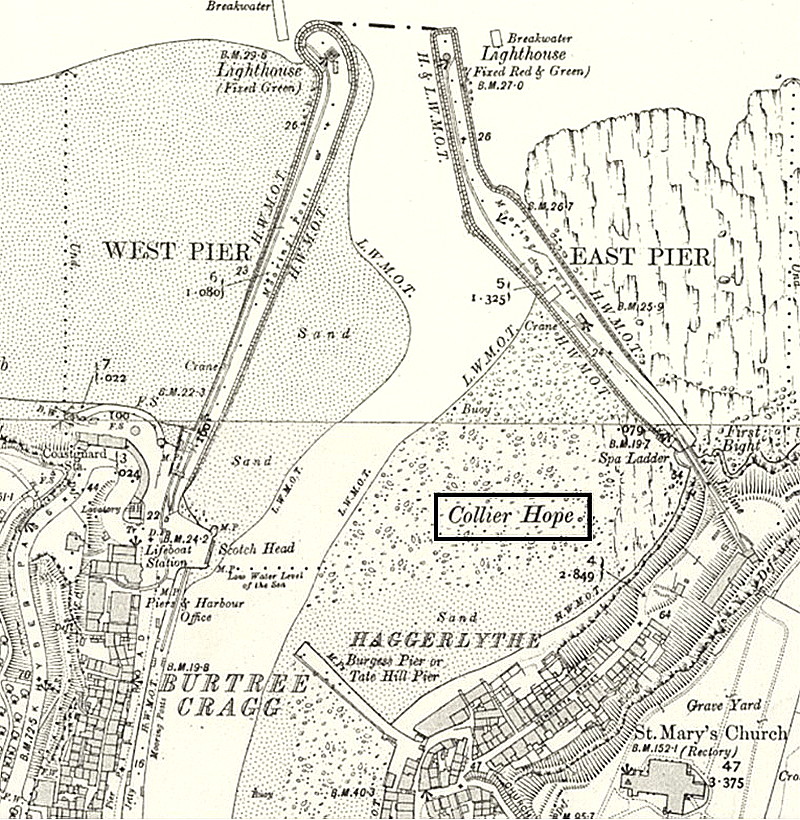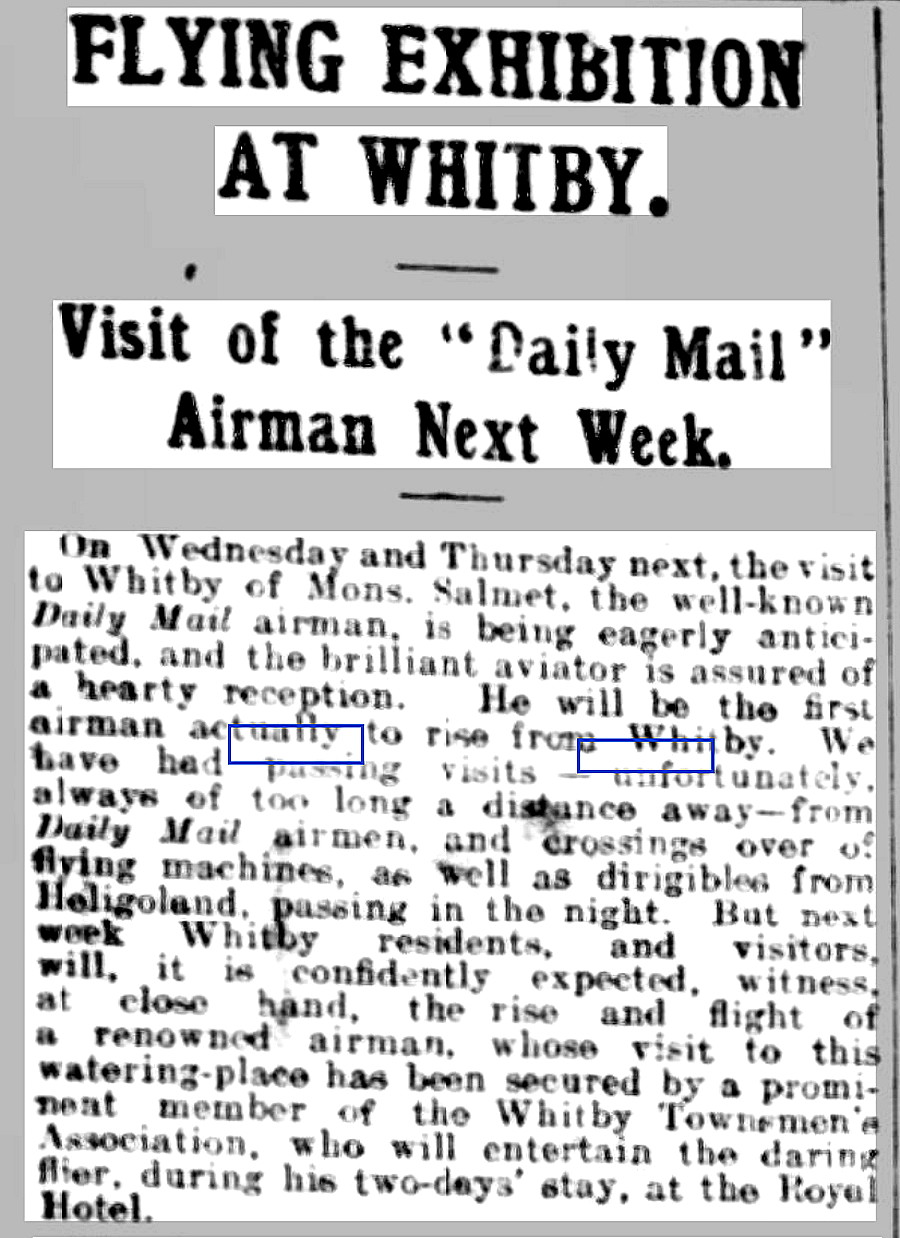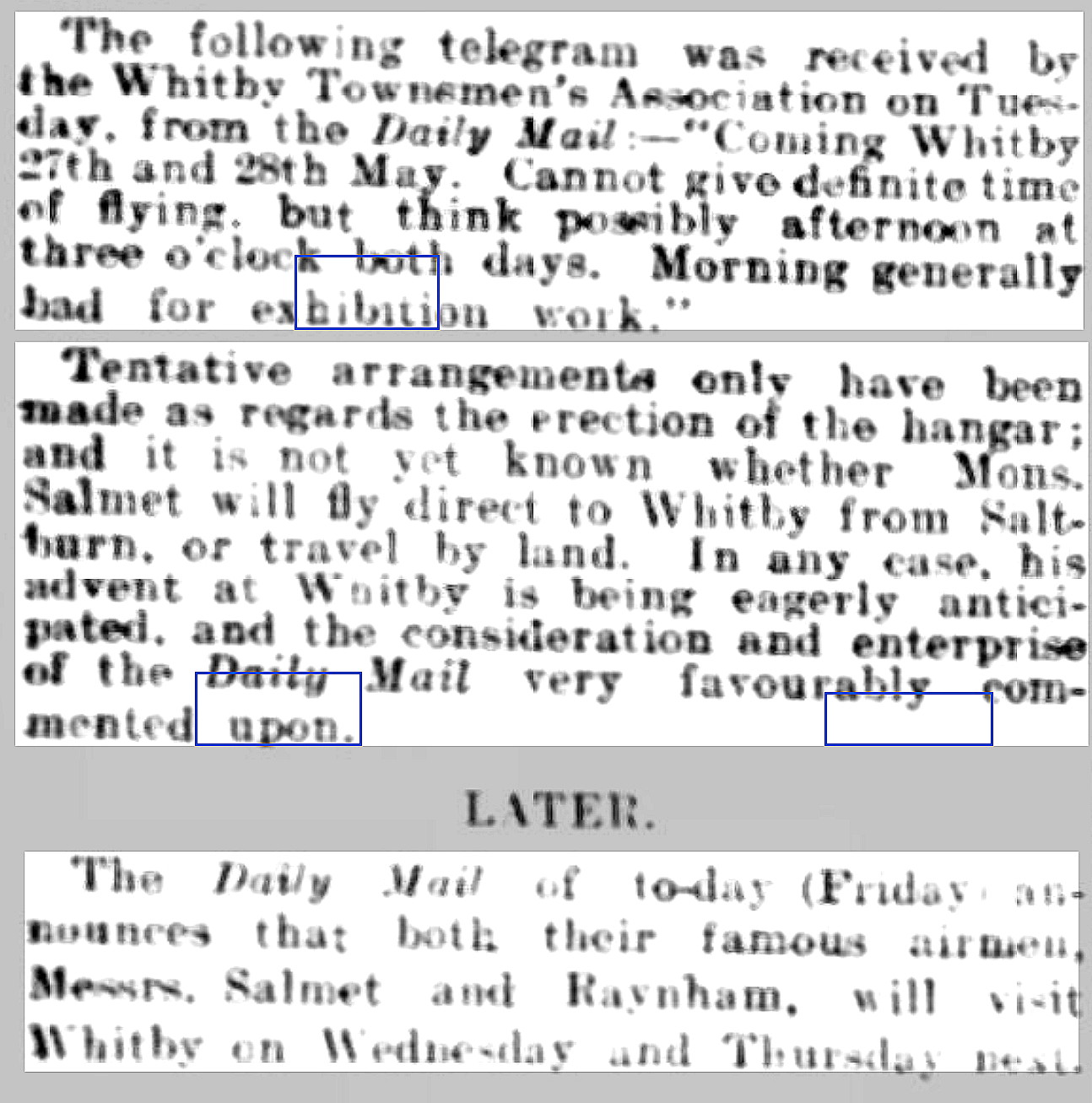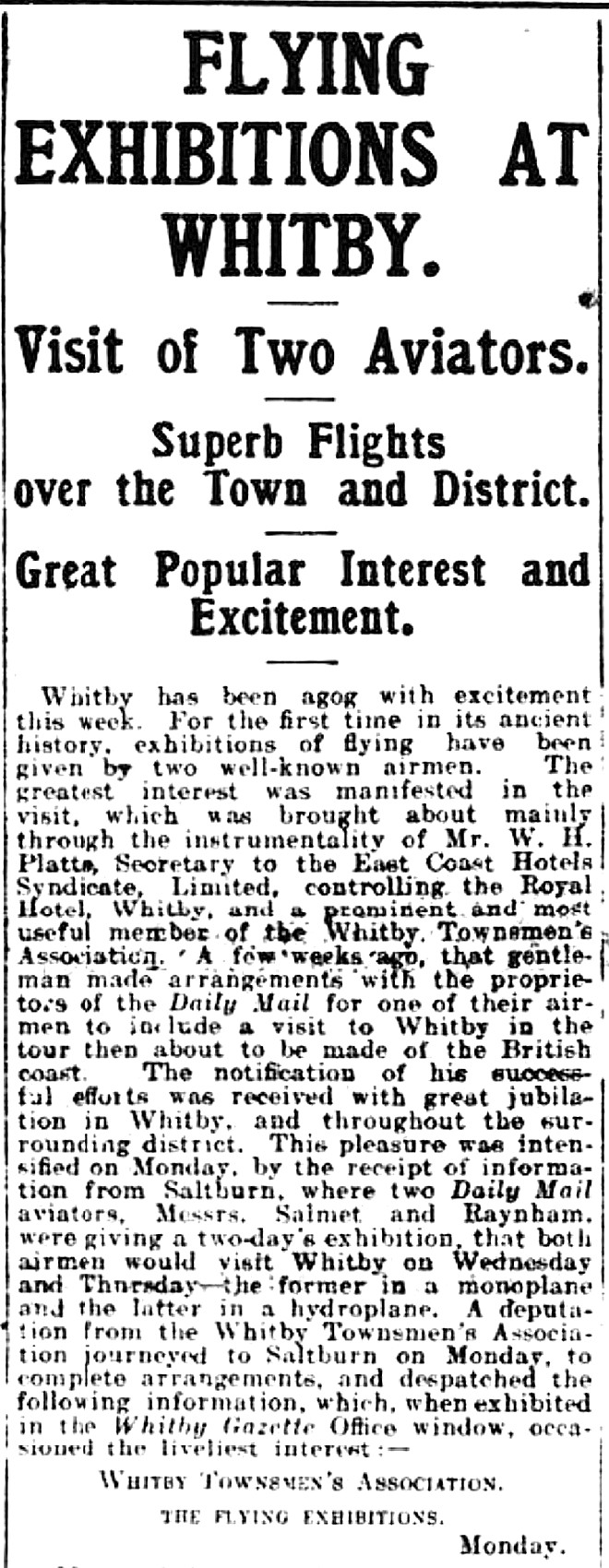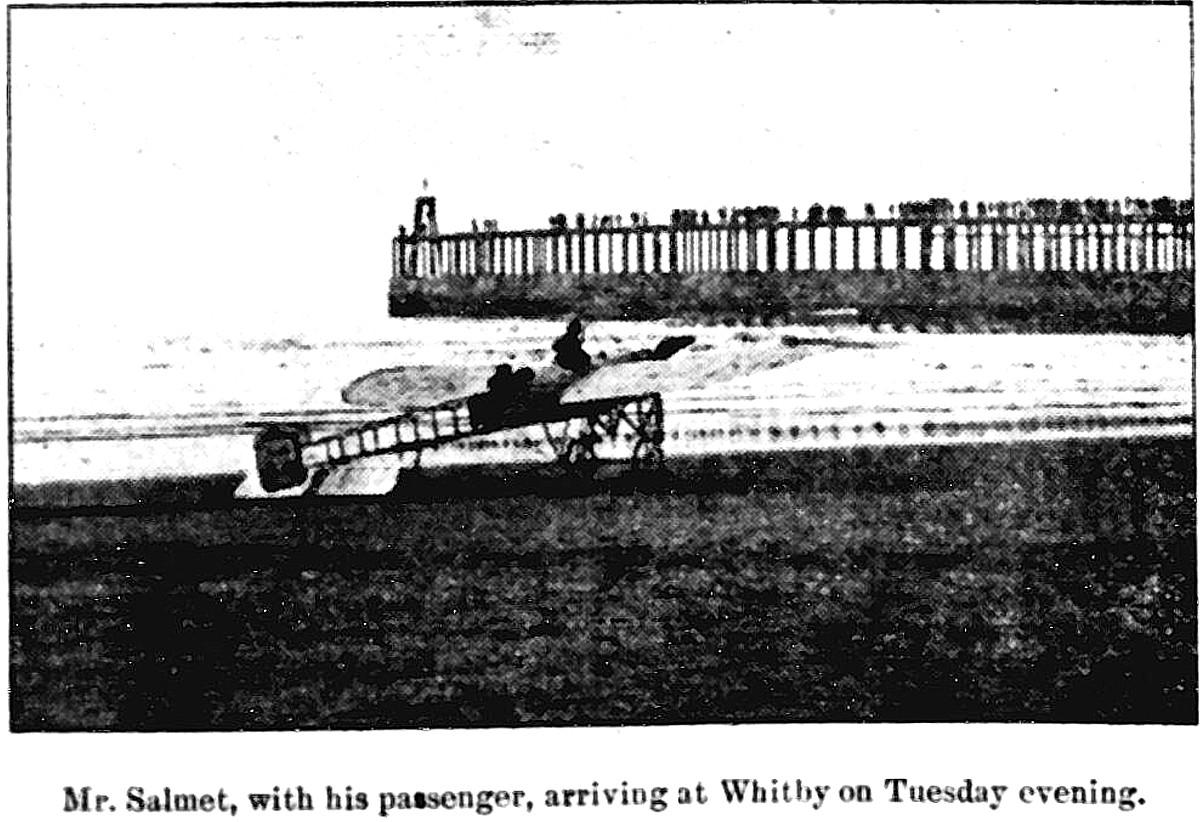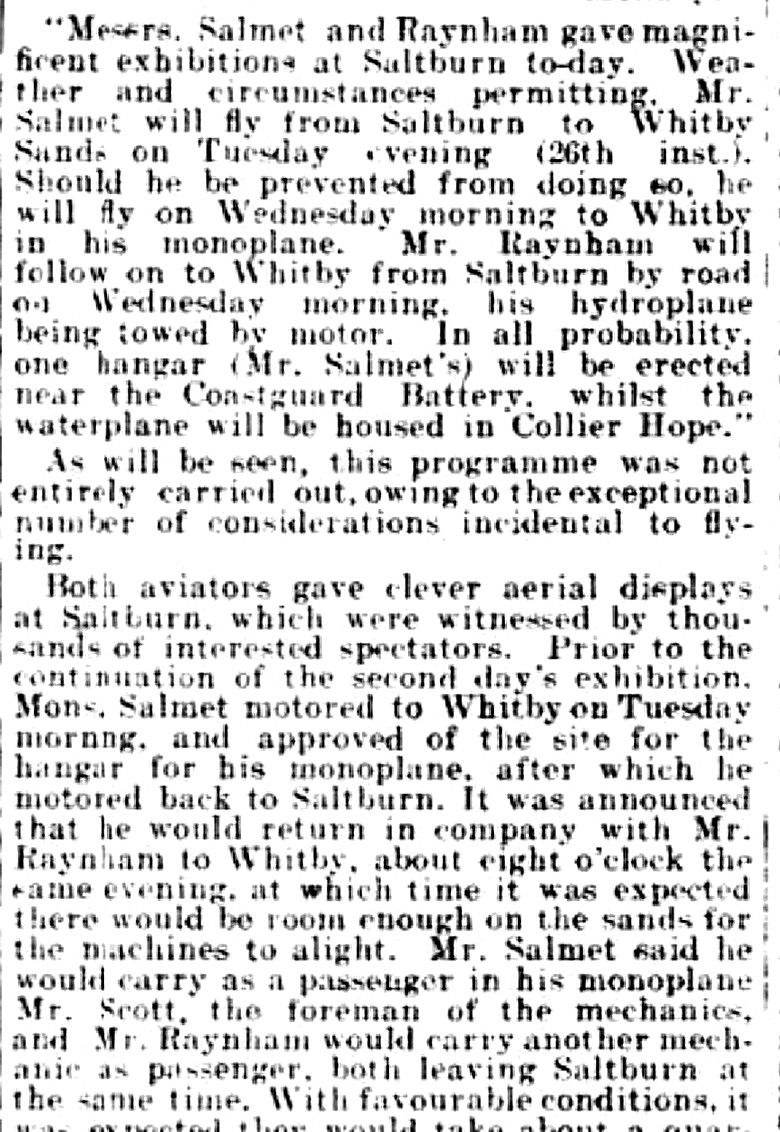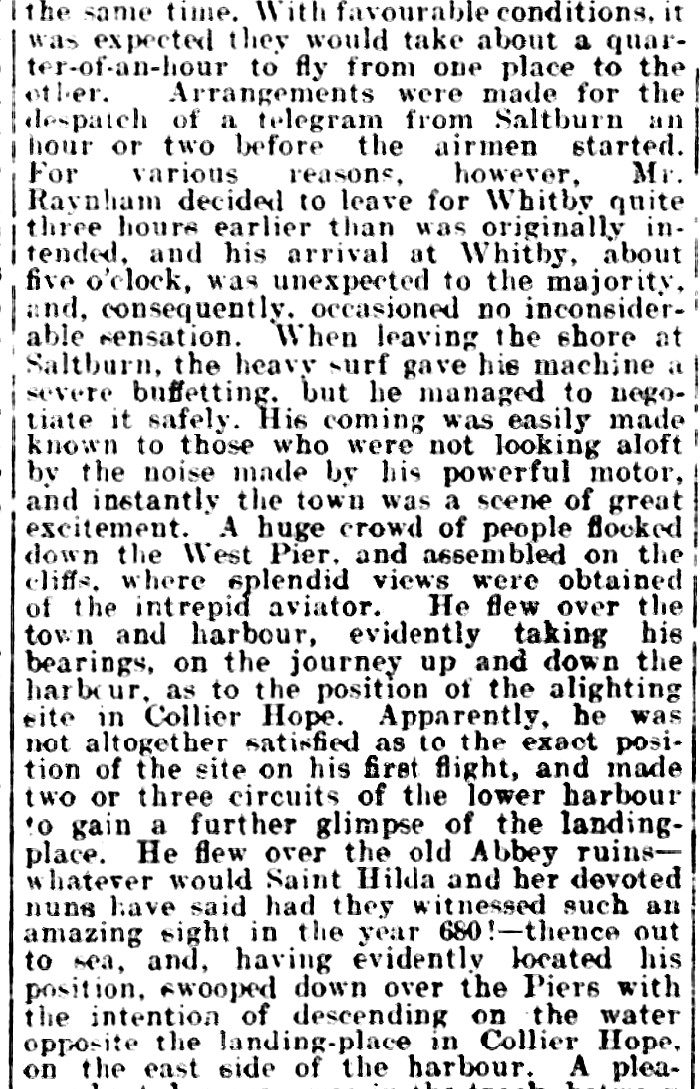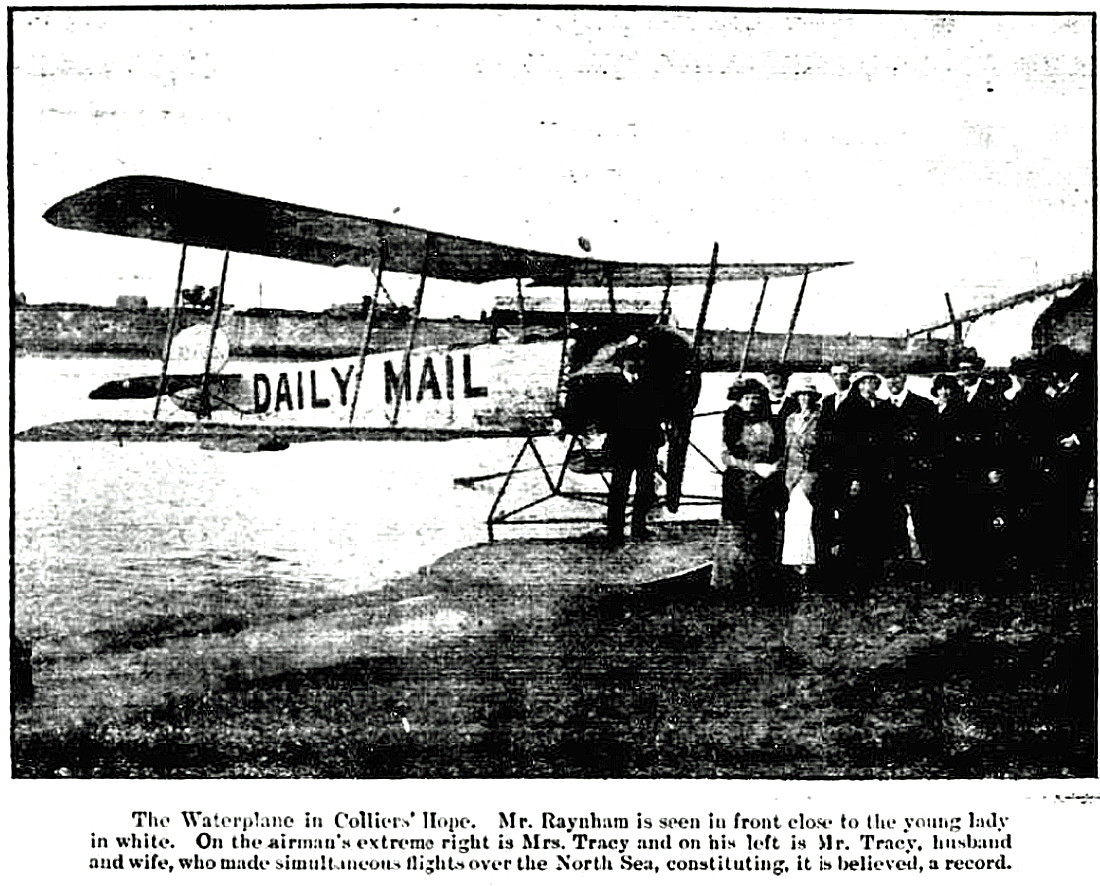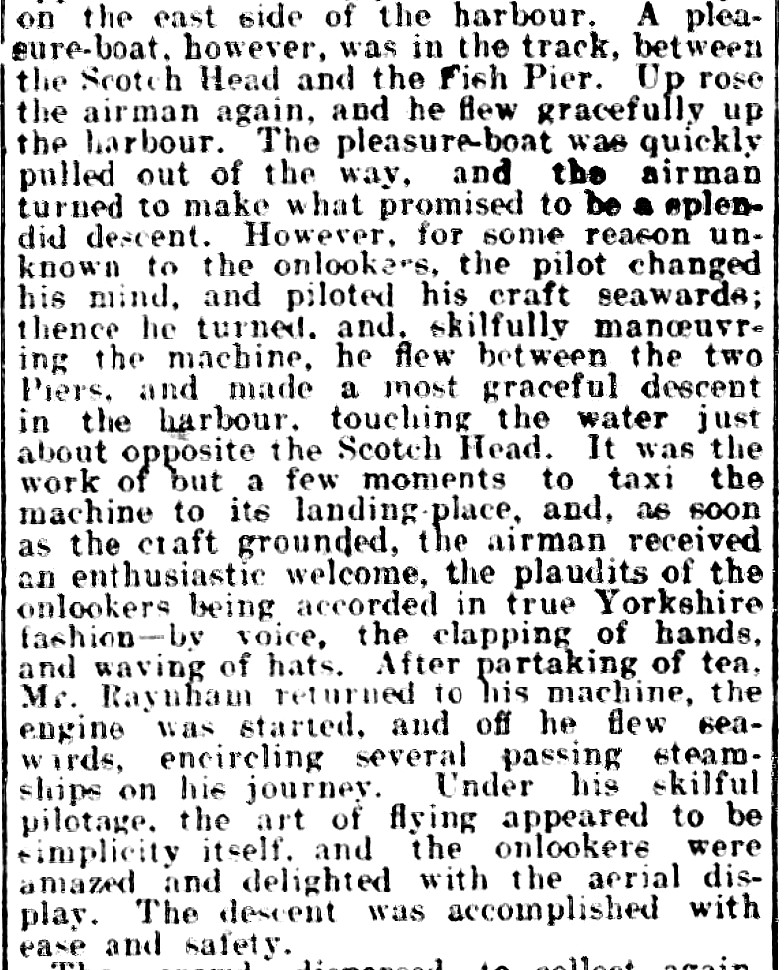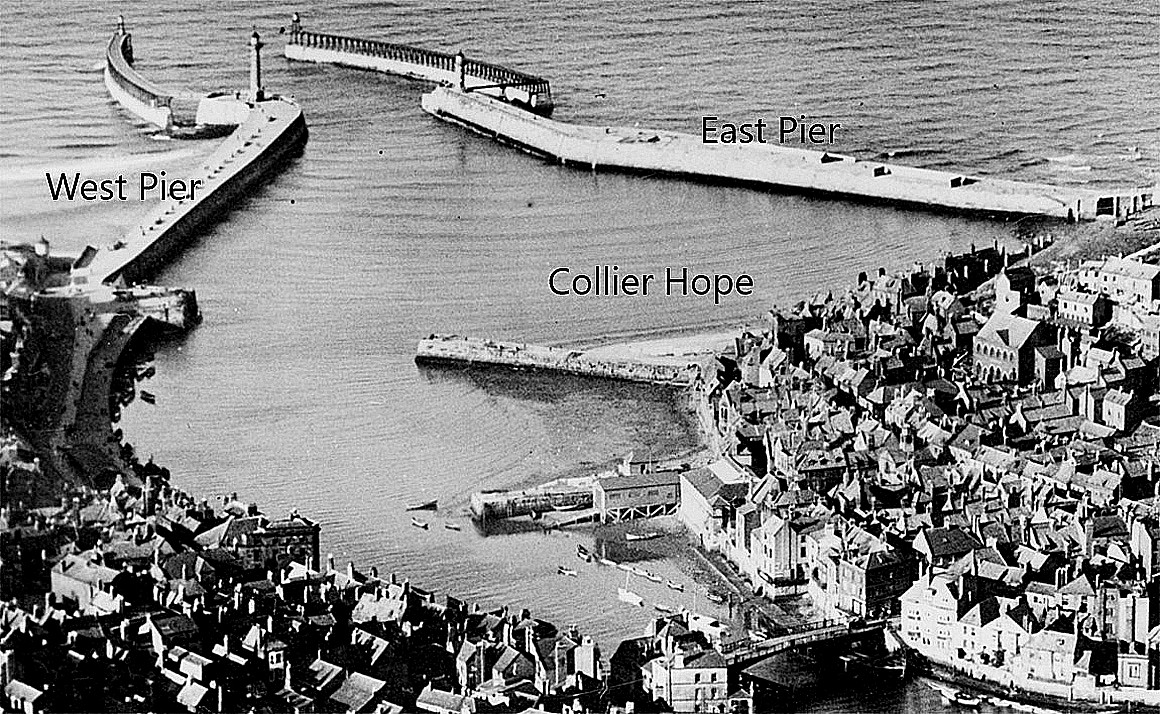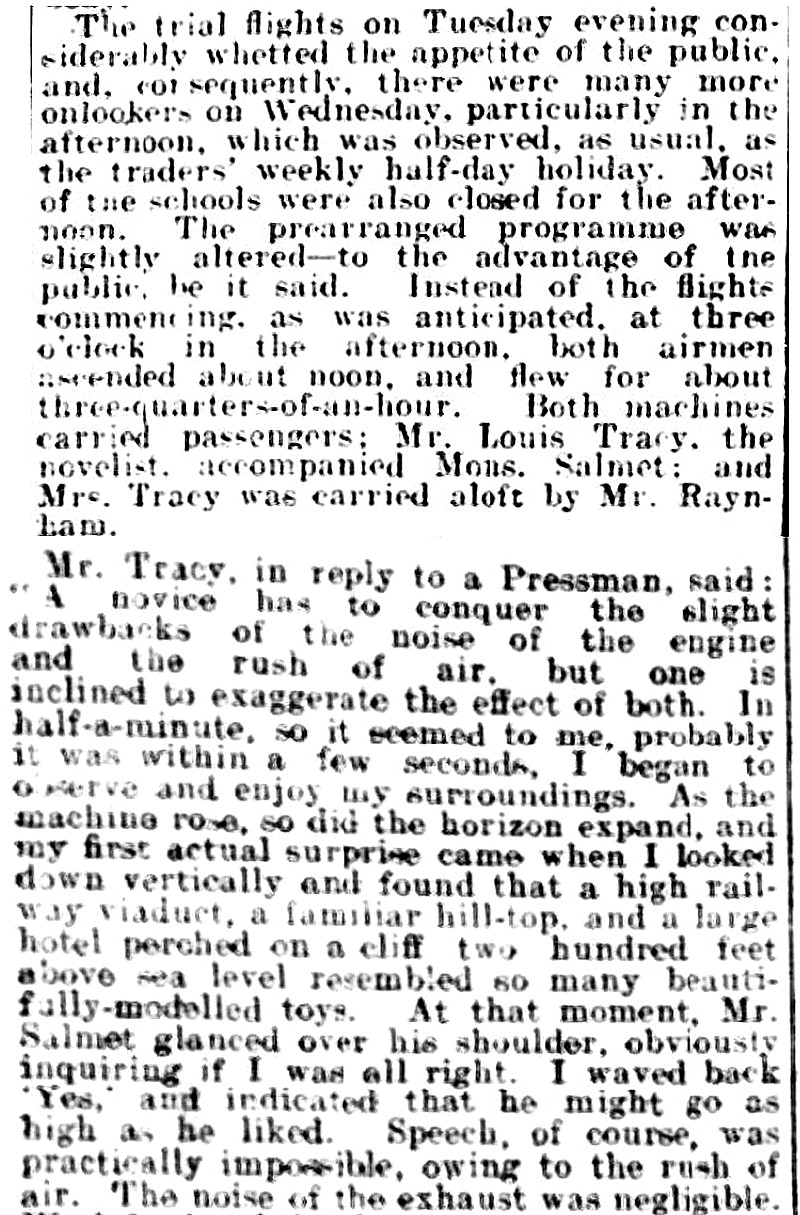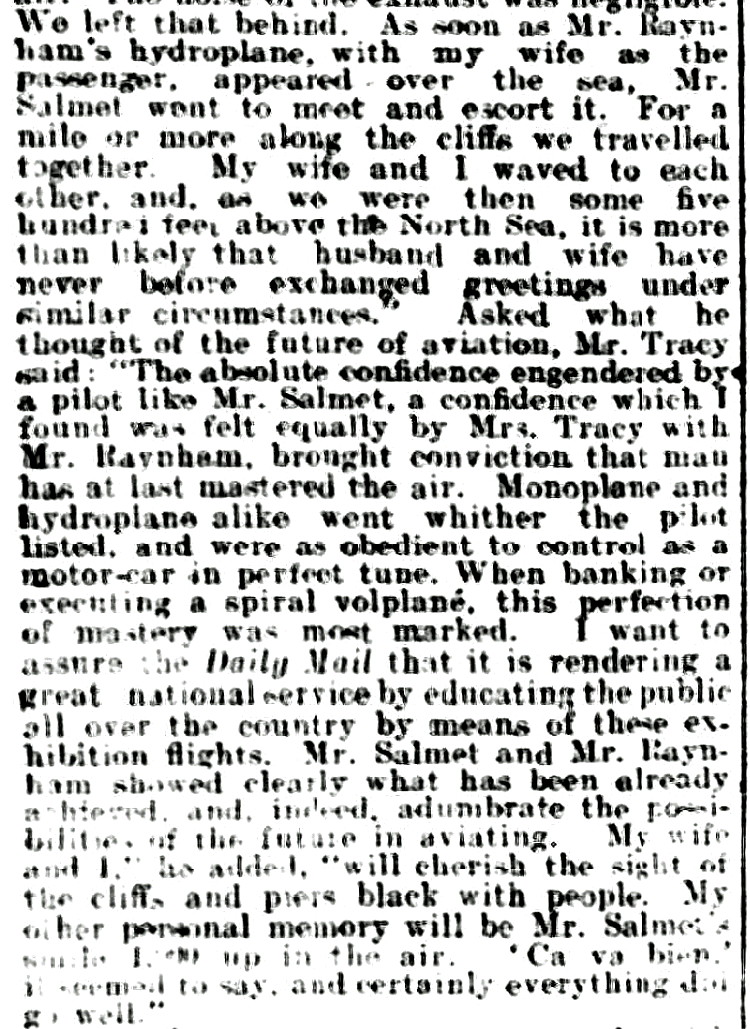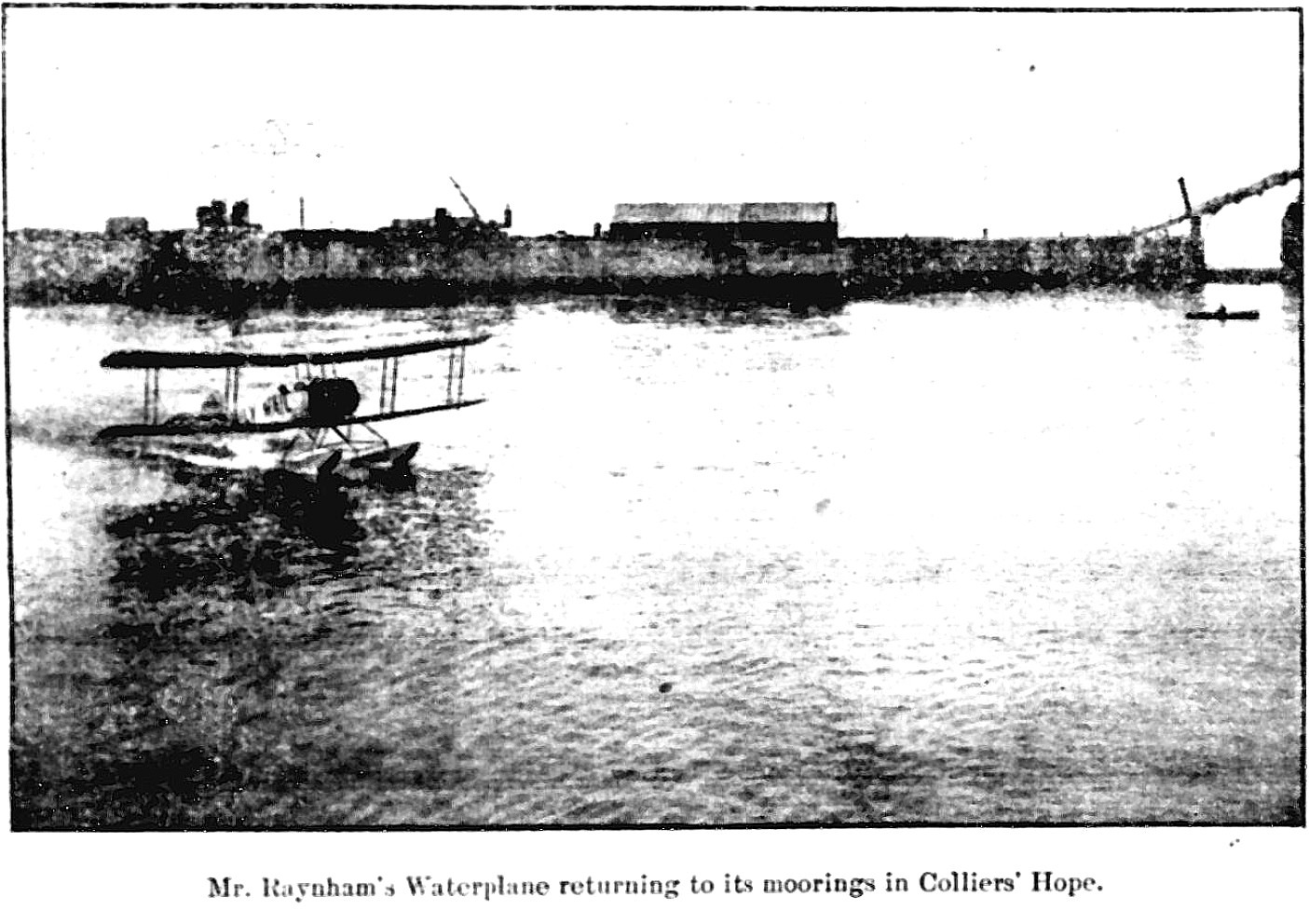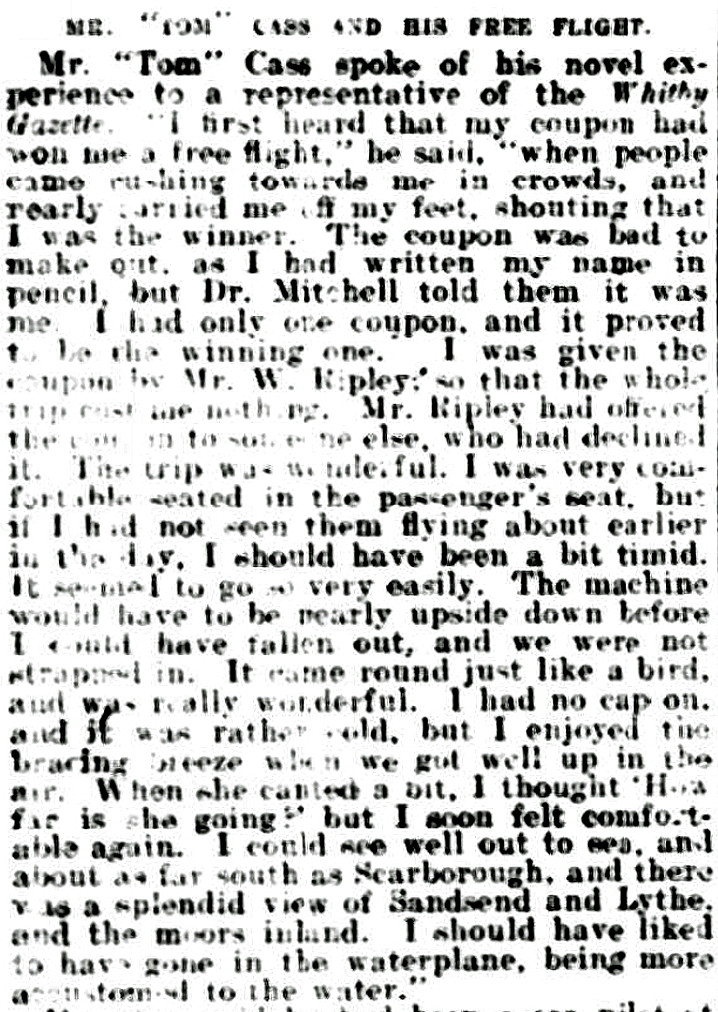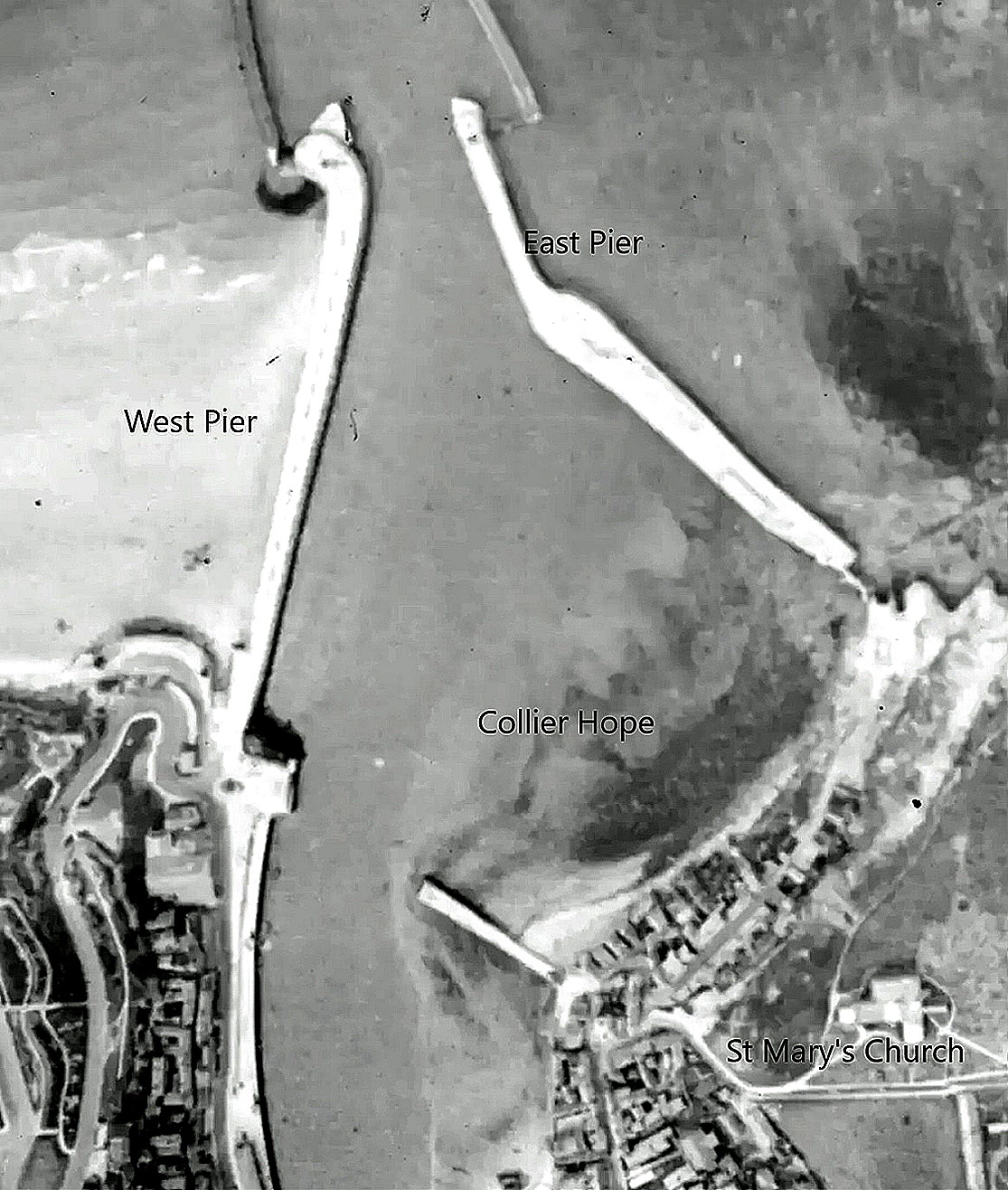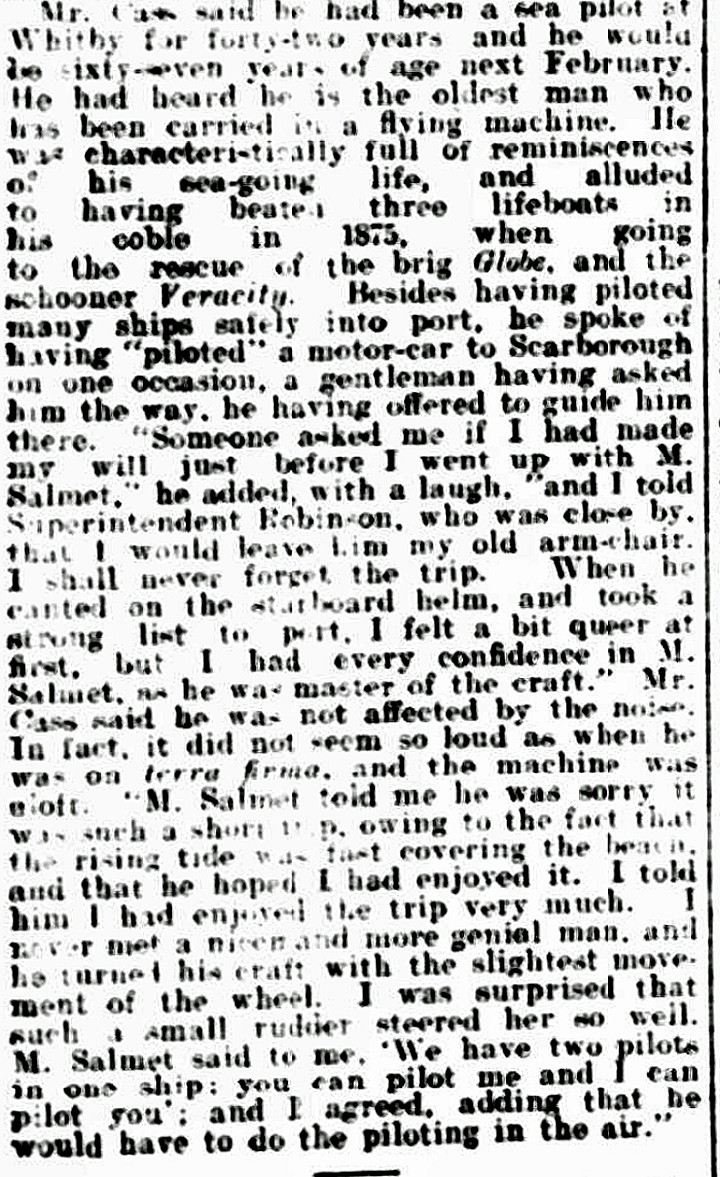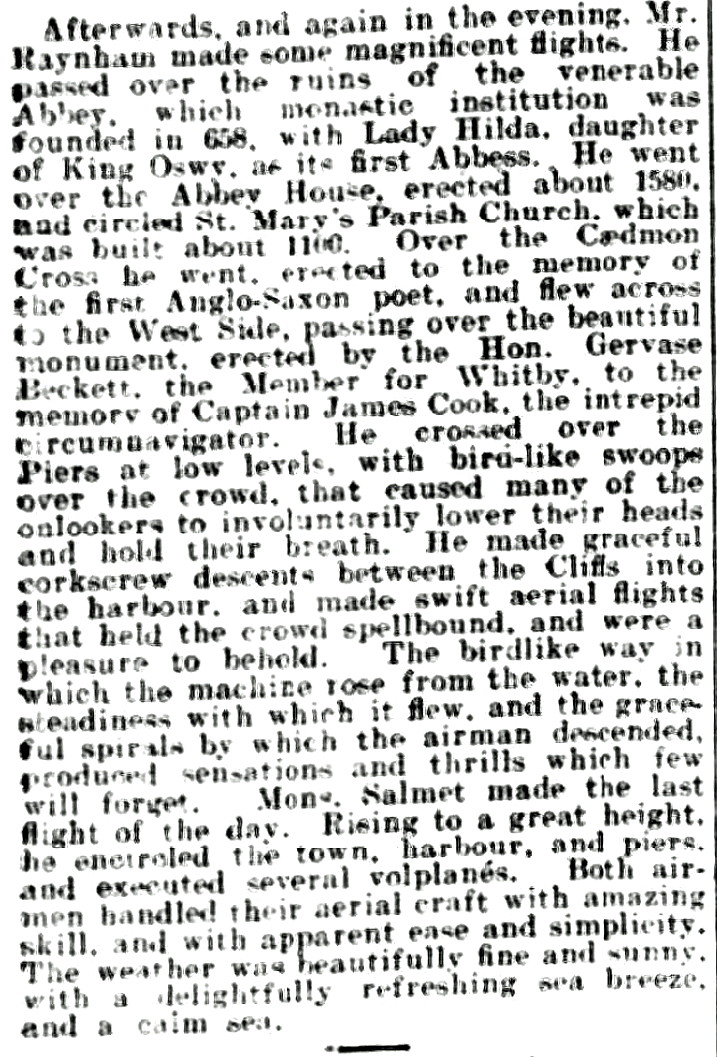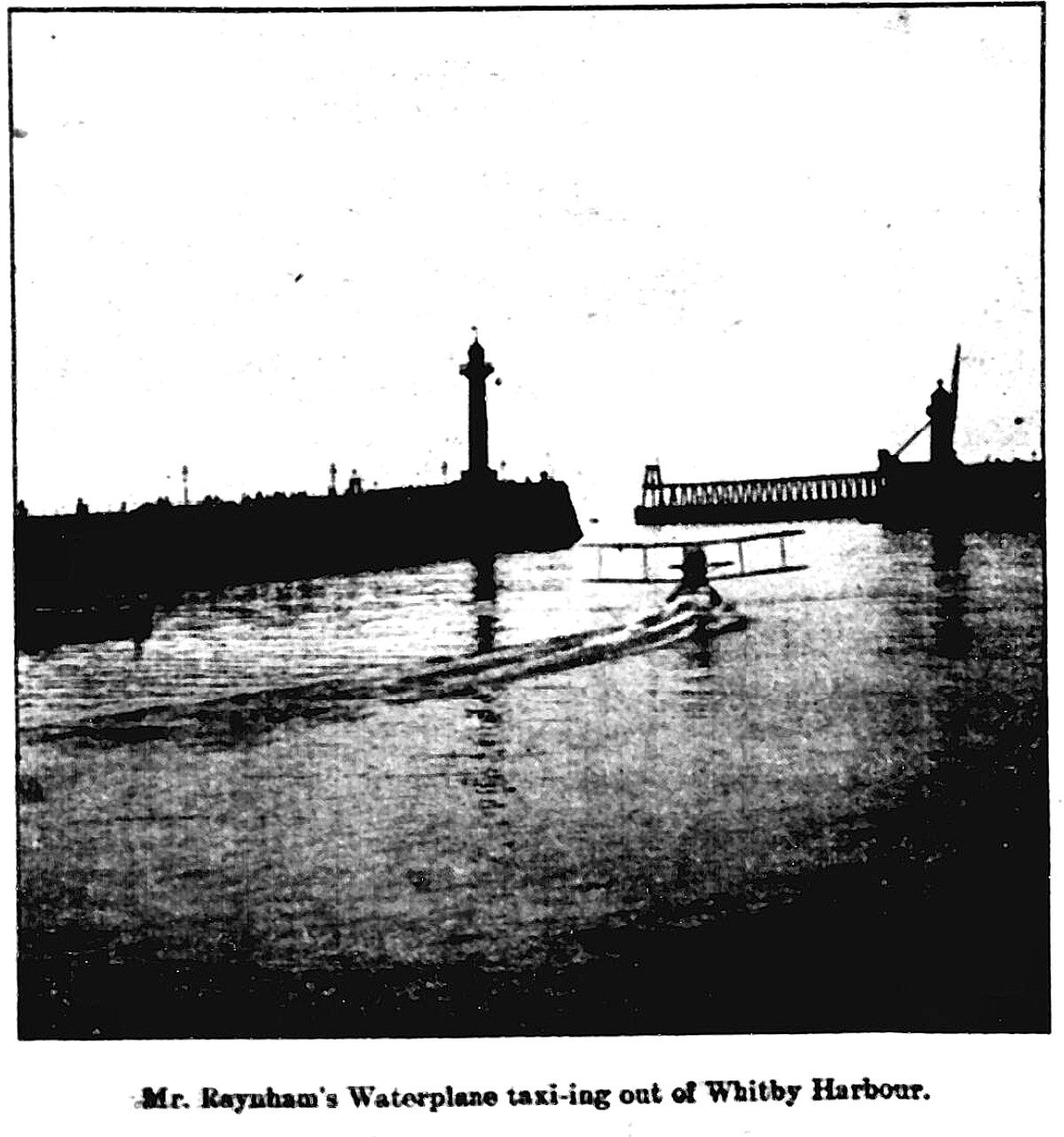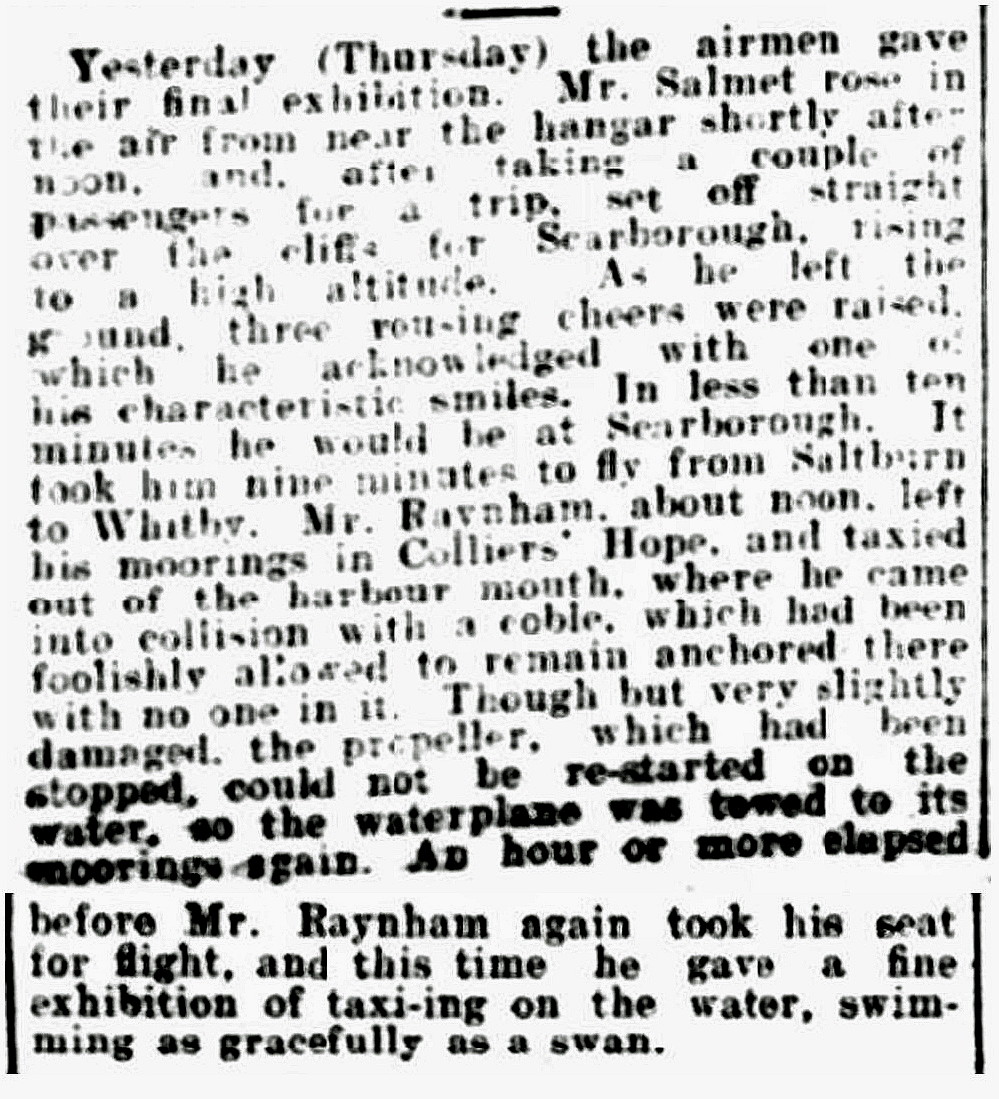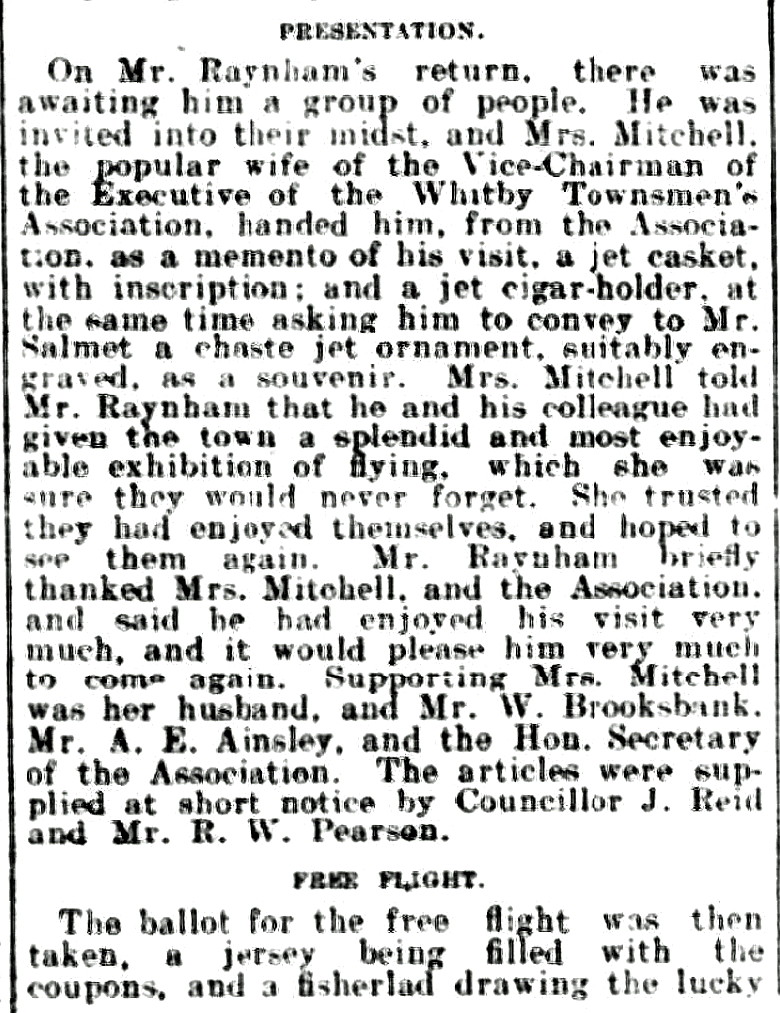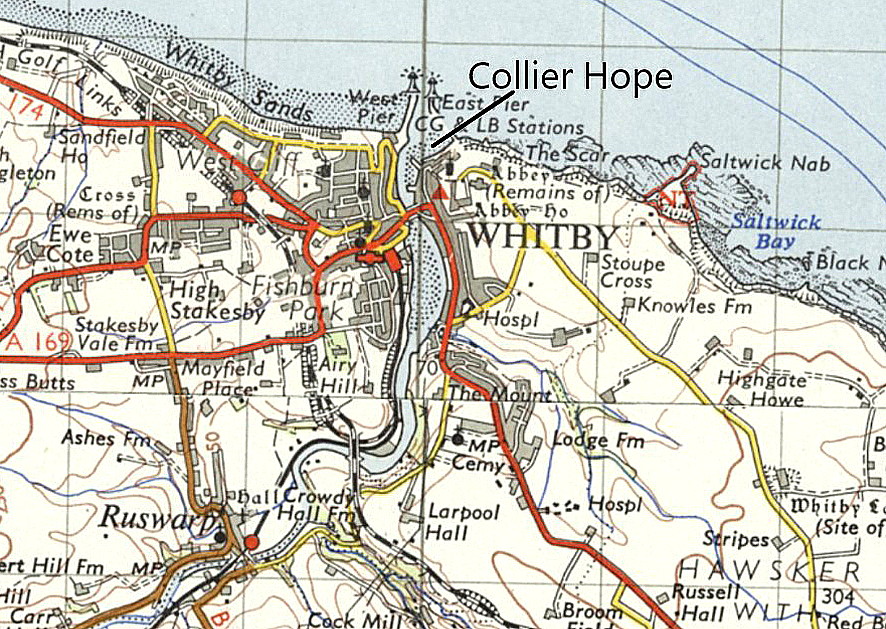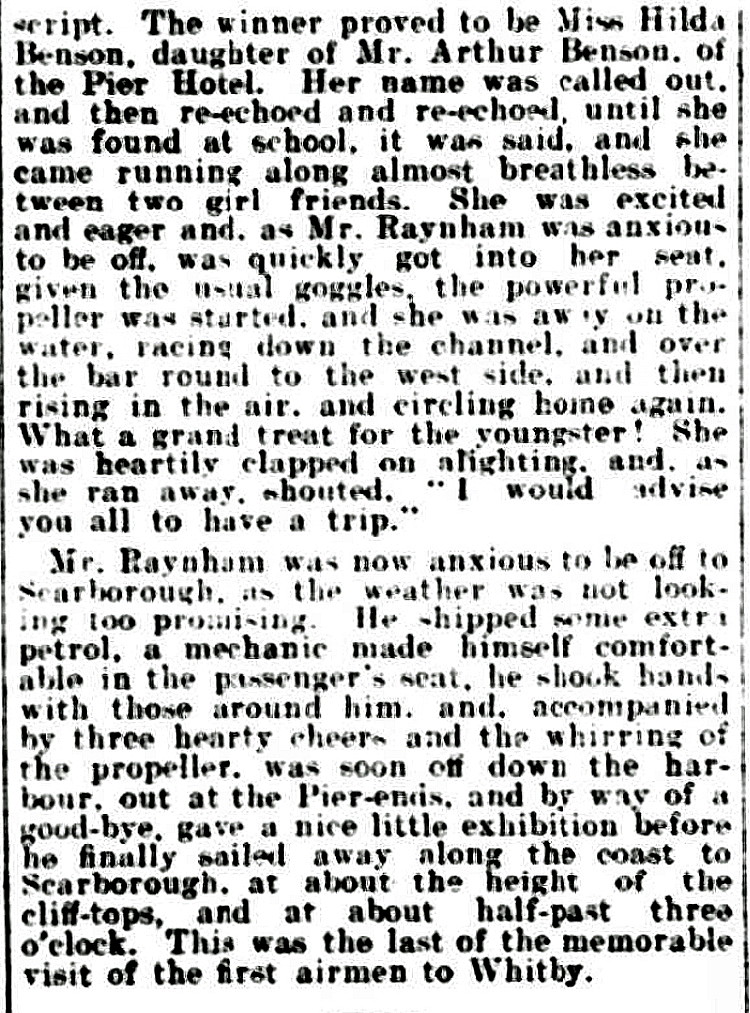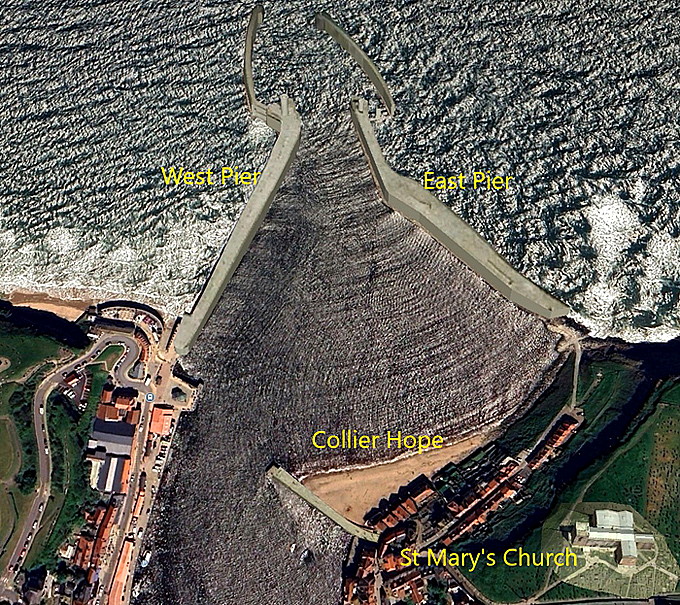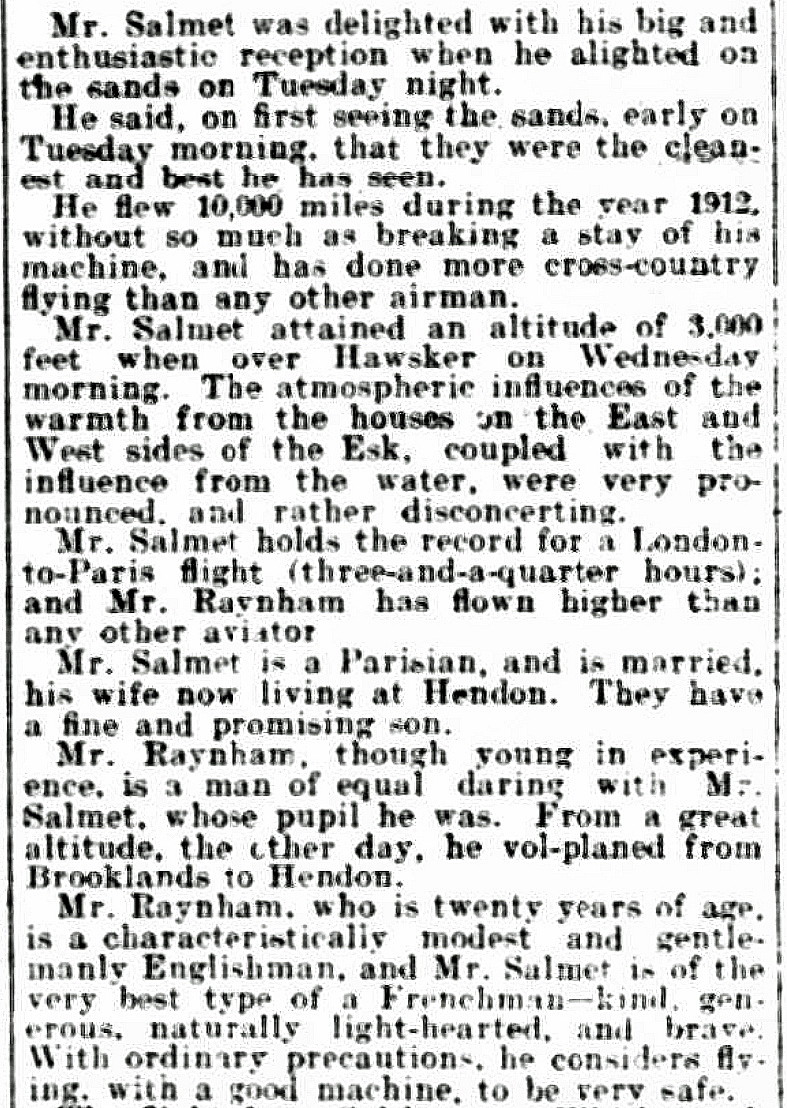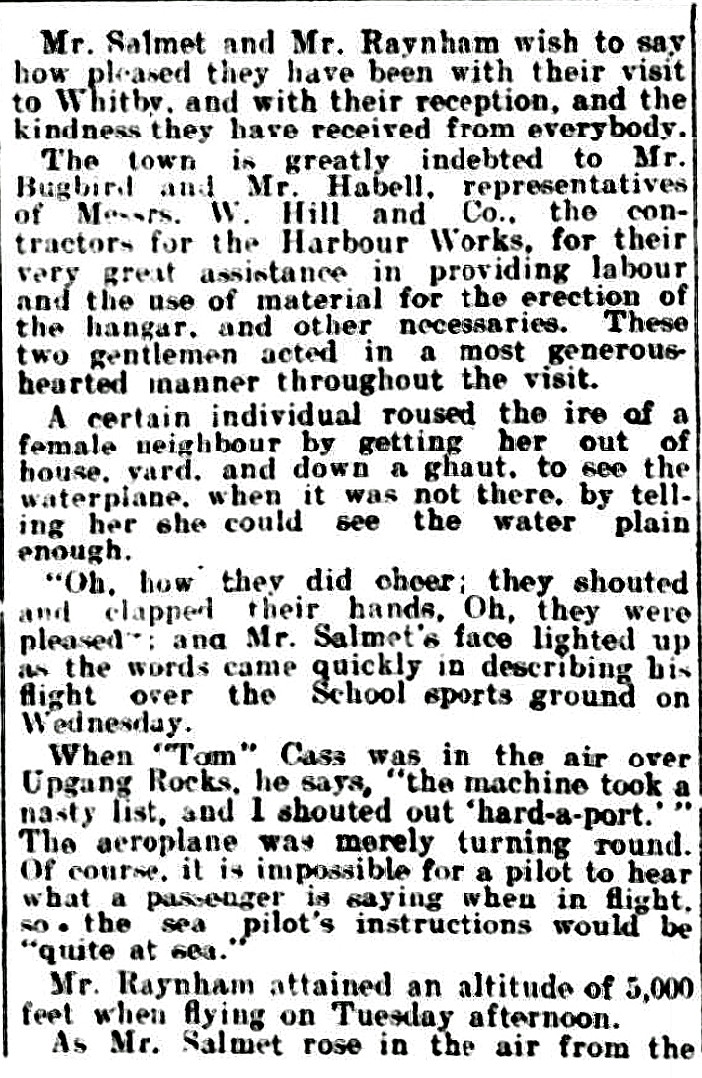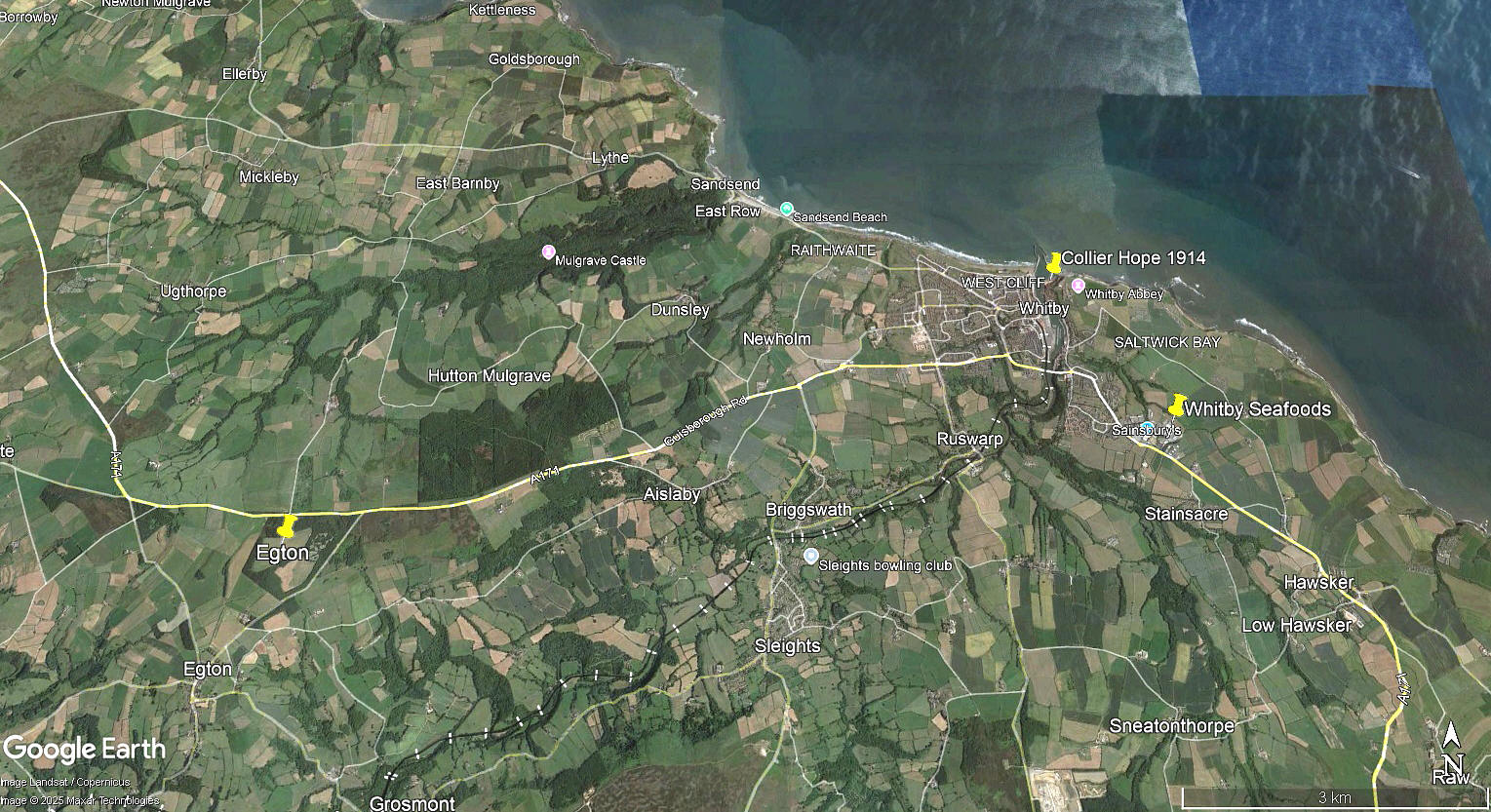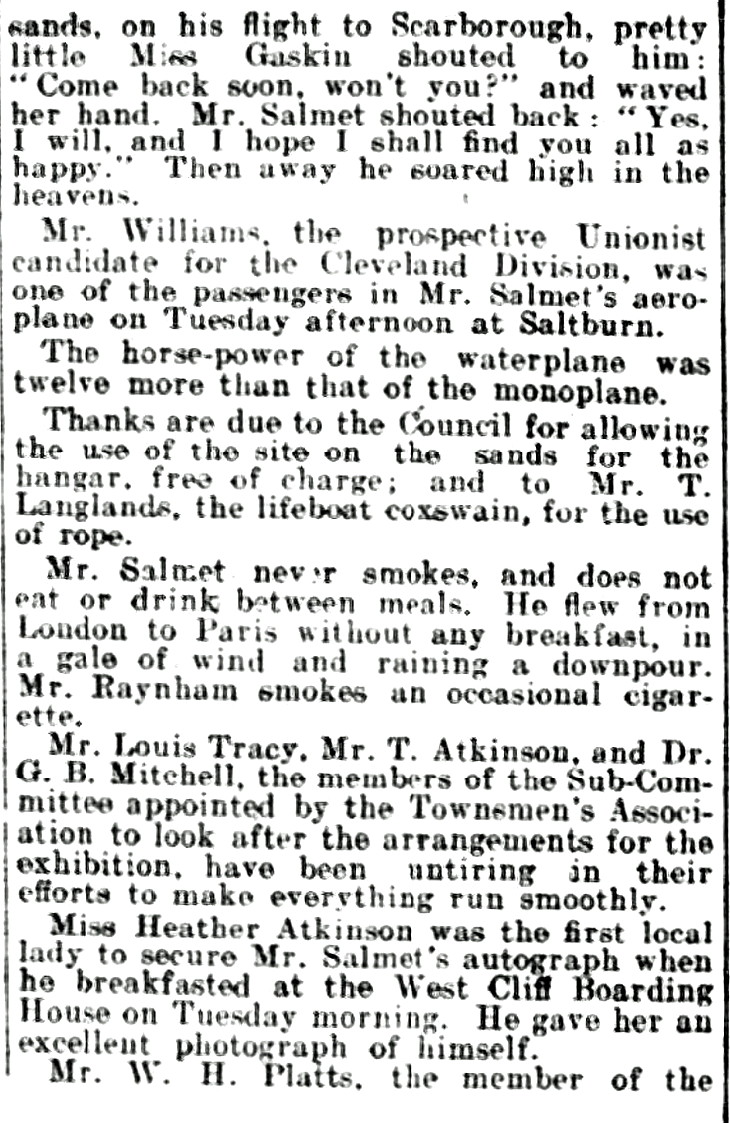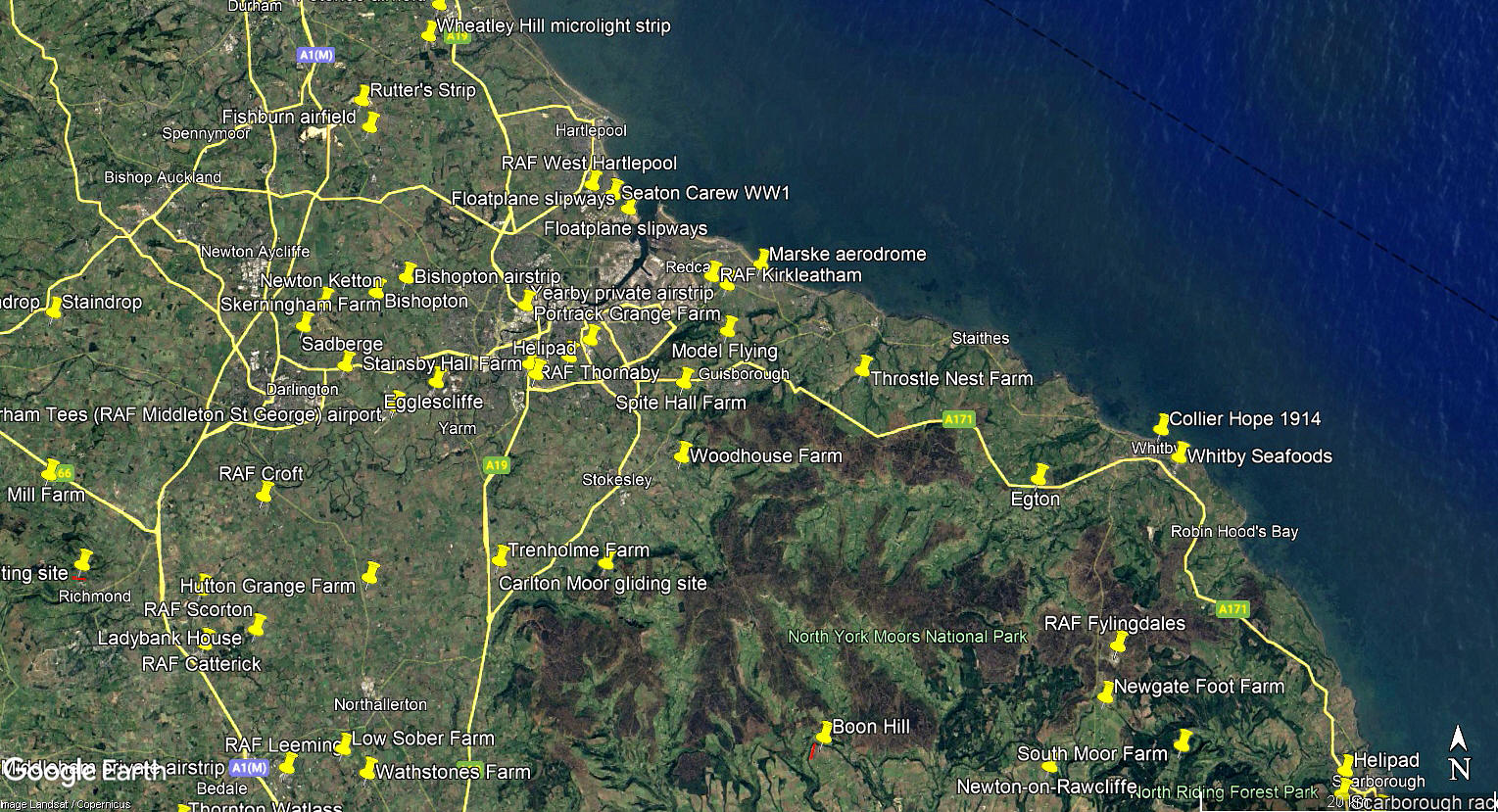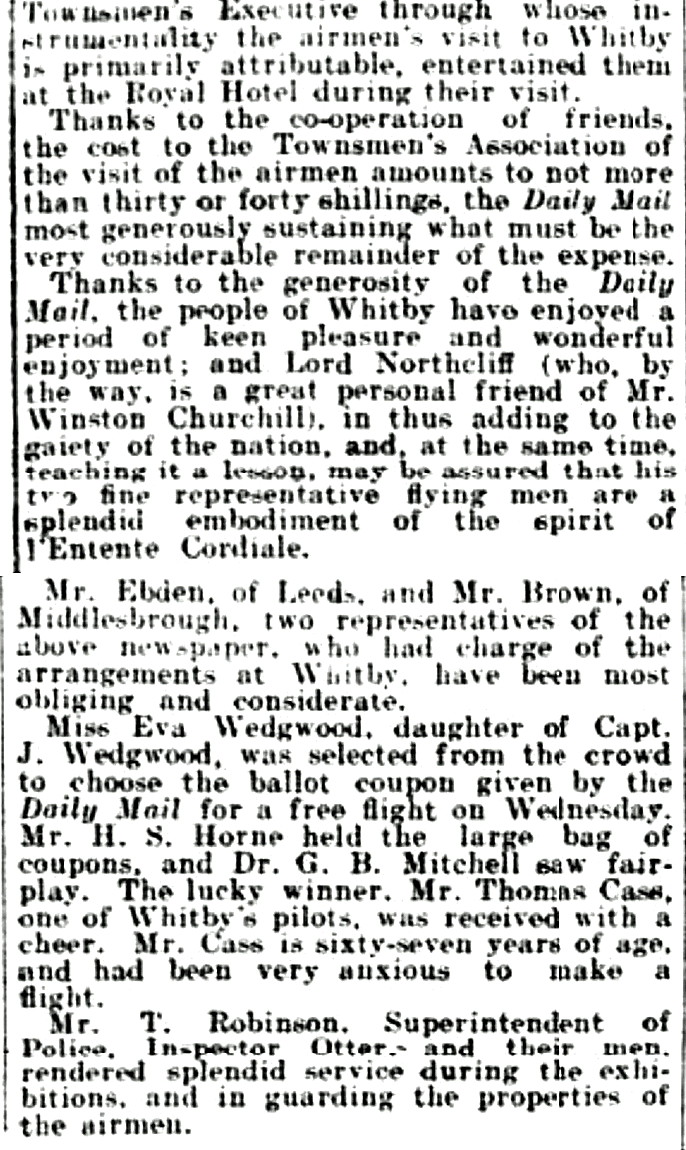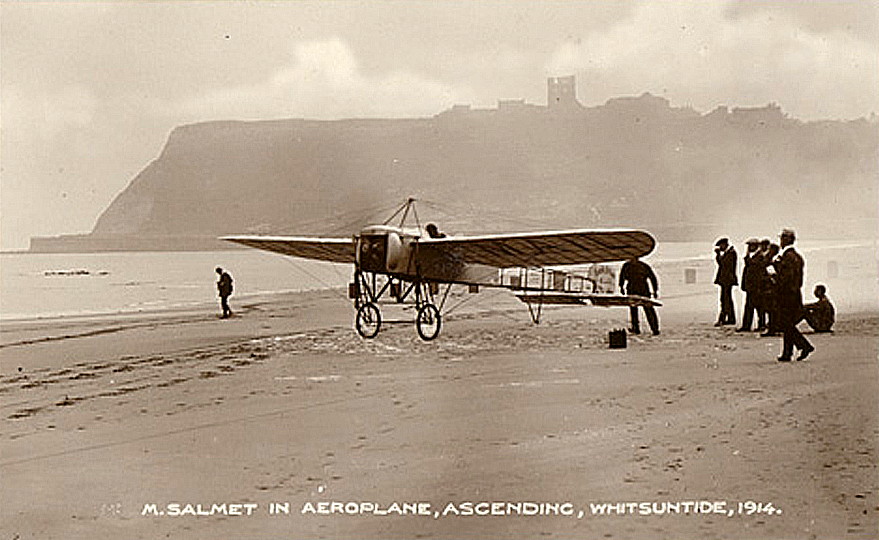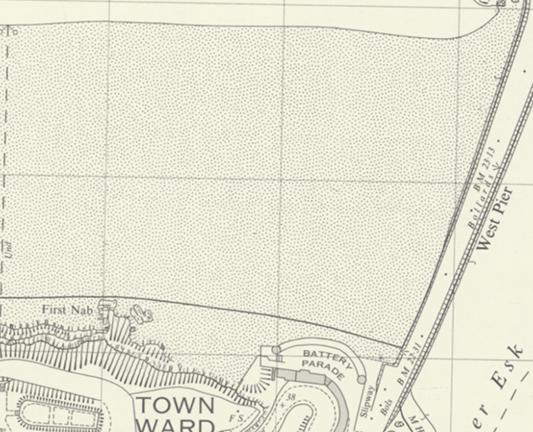Collier Hope
COLLIER HOPE: Temporary land and sea, exhibition of flying site
Operated by: Salmet and Raynham during a Daily Mail sponsored tour
Location: Just inside the harbour mouth, Whitby and West Beach
Period of operation: 27th & 28th May 1914
NOTES: Raynham, then workng for Avro flew in with a 504 type on floats. Salmet flew in to land on the sands at low tide and also flew from West Beach where his hangar was situated. His landing distance, on the Collier Hope beach, orientated roughly 05/23 was barely much more than 200 metres. But, by that time, he was arguably the most experienced aviator flying in the UK for touring around and giving displays.
A MICHAEL T HOLDER GALLERY
We have Mike Holder, a great friend of this 'Guide', for both discovering this location used in 1914, and providing the following.
This article, in two parts, published in the Whitby Gazette on the 22nd May 1914, shows just how much interest the arrival of these two very famous aviators was having at that time. Indeed, the very first time an aviation event had occurred in Whitby.
After the event the Whitby Gazette went ballistic and published on the 29th May, probably the most detailed account I have ever seen. But, have to remark that given the quality of the typeface and page layout seen below, knowing the reputation for Yorkshire people being very frugal, being a southerner, suspect that the Whitby Gazette may well have acquired their printing press equipment, second hand, from William Caxton after he decided to upgrade in the 15th century.
SOMETHING TO THINK ABOUT?
This first picture, published in the Daily Mail, shows Salmet about to depart from West Beach at Whitsuntide. In 1914 Whit Sunday was the 31st May, Whit Monday the 1st June. But of course, Salmet and Raynham had being flying at Whitby on the 27th and 28th of May. It appears that Salmet did stay in Whitby, before flying on to SCARBOROUGH on the 31st.
NOTES: The local area and area views are from my Google Earth © derived database. Mike and I did wonder why Henri Salmet elected to use this rather restricted beach area at low tide as opposed to always using the much larger West Beach? There may have been more than one reason of course, but it seems likely that he and Raynham thought it best not to split the large crowd of spectators as far as possible?
In those days, at seaside resorts, although unusual, we have come across a few examples of landplanes and seaplanes being operated in close proximity; take PAIGNTON for example.
Having developed strong 'nerdy' and 'anoraky' tendencies since working on this 'Guide' for now (in 2025) over a quarter of a century, I have become interested in the amount of ways a seaplane, or rather floatplane, has been described. In the early days the terms hydro-plane and water-plane seem interchangeable. The term flying boat being reserved for those types that landed on their 'boat-like' hull, which formed the lower part of the fuselage.
AT THE BEGINNING
The first experiments of flying off water was from lakes or rivers, for the very good reason that these are free from swell that is more often the case with the open sea. Indeed, even when landing on the sea, invariably a sheltered location, preferably a harbour as in this case, was the preferred option. Especially for docking and/or beaching. Also, due to its high centre of gravity, a floatplane if caught sideways on in a sea swell, is very prone to capsizing. This apect becoming increasingly important as these types became much heavier due to the use of metals.
The usual remedy was, as with flying boats, to fit small floats well outboard on the wings. Looking at the pictures above I noted that the Avro was not fitted with these. As with everything in aircraft design, compromises have to be made, and adding wing floats adds weight and considerable aerodynamic drag. With designs like the Avro biplane seen above, being relatively low powered, the common joke in aviation is that it had a 'built in' headwind! Note how small the floats are compared to modern floatplanes, here again a good indication of how "light" it was.
We'd love to hear from you, so please scroll down to leave a comment!
Leave a comment ...
Copyright (c) UK Airfield Guide















